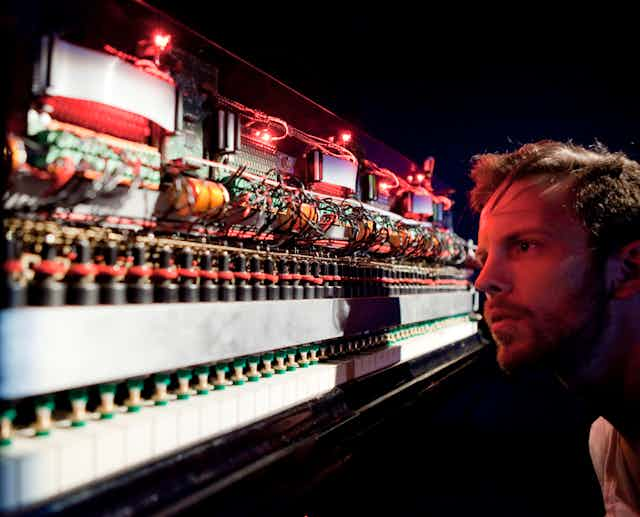Electronic engineers are emerging as important contributors to understanding of the workings of the human brain.
There is a rapidly growing intersection between electronic engineering and neuroscience. As a relatively new angle of attack, this kind of research could lead to breakthroughs in medical treatments of brain disorders and artificial intelligence technology. Why is this?
Neuroscientists measure the brain’s electrical activity using technologies such as Functional Magnetic Resonance Imaging (fMRI), Electroencephalography (EEG) and electrical probes.
Through such technologies we know that certain patterns of activity may indicate disorders such as schizophrenia, epilepsy and Alzheimer’s disease.
But what these kinds of measurements don’t tell us is how brain cells (neurons) work together to enable complex functions such as movement, intelligence and emotions. This is where computational neuroscience comes in.
Answering these questions about computation in the brain is the holy grail of neuroscience. Or perhaps more aptly, the one billion Euro question, which is how much the European Union recently committed to the Human Brain Project.
The intersection between electronic engineering and neuroscience was recently highlighted by myself and co-guest editors for the Institute of Electrical & Electronics Engineers. We looked at research on both exciting new technologies inspired by biology, and progress being made in brain science.
Why the brain knows best
As a computational neuroscientist, my own research group wants to understand why the brain excels at extracting information from our senses.

For example, automatic speech recognition lags far behind the brain at tasks such as separating voices in noisy environments. What is it about neurons that make the brain better at this?
As an electronic engineer, I want to apply knowledge of how neurons process sounds to design technologies as good as humans at tasks like speech recognition and automatic music transcription.
In all this work I am motivated by physicist Richard Feynmann’s famous chalkboard motto: “What I cannot create, I do not understand.”
The idea is that designing and creating technology that mimics what we already know about neurons will teach us even more about how they work together in the brain.
Although steps in these directions can be made using standard computers, there is an alternative and increasingly fruitful approach.

This is to design electronic circuits that more closely mimic networks of brain cells. For example, vision sensors that mimic neuronal responses of the retina can enable robots to move rapidly to stop moving objects.
Unlike the digital and sequential processing of computers, the brain’s neurons are analogue, parallel and imprecise. Embracing these features in electronics design is known as neuromorphic engineering.
In Australia, for example, the Bioelectronics and Neuroscience group at University of Western Sydney work in this area.
They have shown that circuits that mimic the unpredictable variability of neurons can be built and made to work using less power than conventional designs.
The future is bionic
The importance of “reverse-engineering” the brain in this way was touched upon in The Conversation in February.

This was in response to an Australian Academy of Science think-tank report on Australian neuroscience research. The report discussed a program to “create a bionic brain.”
“Bionic” literally means the intersection of biology and electronics. To “create a bionic brain” in electronic circuits will certainly require electronic engineers.
Cochlear implants, for example, successfully combine electronics with brain science, and are known as “bionic ears”.
Research on electronic “medical bionics” for brain disorders ranging from vision loss, to epilepsy treatment, to Parkinson’s disease to Alzheimer’s disease is also underway.
But as well as such applications, I believe that by mimicking the brain’s circuits, engineers also can advance fundamental understanding of neuronal computation in the brain.
In turn, this enhanced understanding will ultimately lead to engineered systems that replicate and surpass the capabilities of human intelligence.

